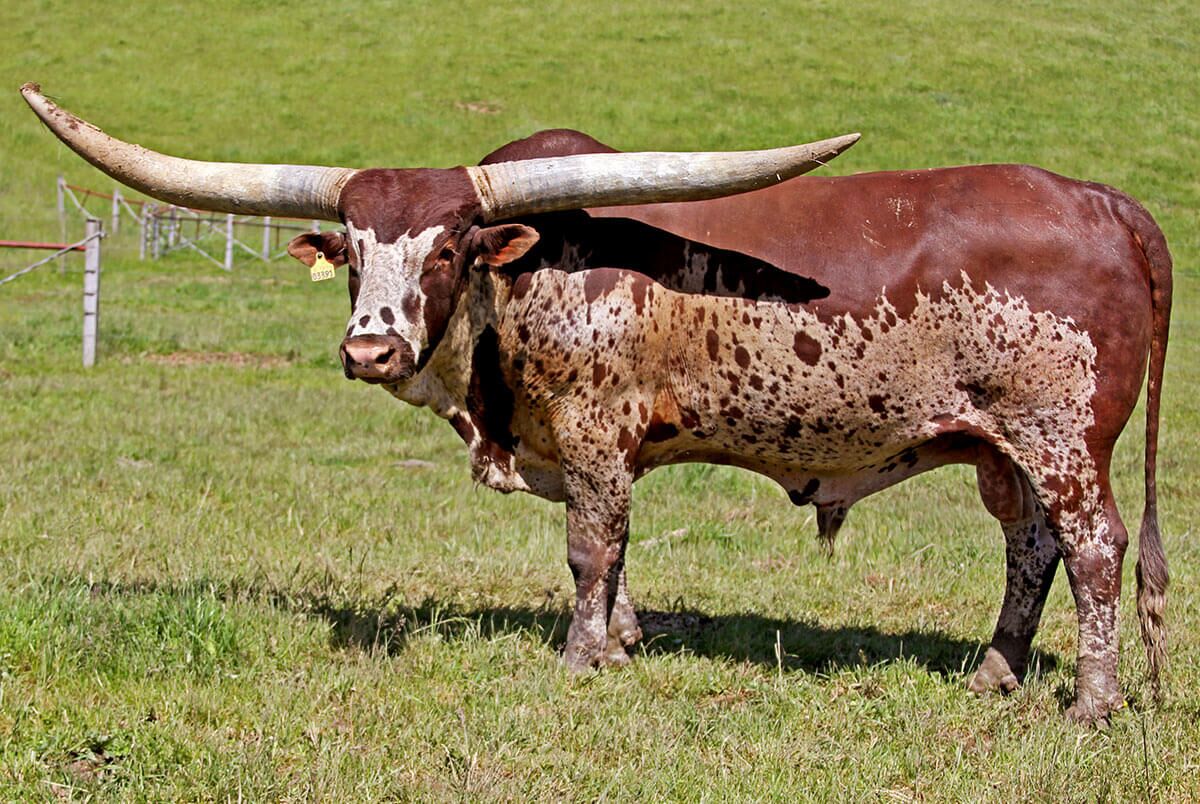Jimmy The Swede was born in a Stockholm, Sweden zoo in 1977. Him and a solid red bull were purchased by Jimmy Tarbox of Oklahoma, brought to the USA and quarantined for months in the Harry S. Truman Import Center of Florida. This process cost many thousands of dollars and only for those with great appreciation of rare genetics could afford it. It was the regulation for all zoo animals and livestock coming into the USA breeding herds. Blood was drawn monthly, all kinds of tests were run. If a resident of HST flagged any positive test, the carcass would be burned immediately. In fact every day sanitary methods of scooping fecal material and burning it was standard process. To government inspectors capable of finding bones in animal crackers---there was an hourly hunt for any infectious organisms.
Jimmy The Swede, a history
Erstellt am: von Longhorn
DCC Ranch e-News ##330 - 10-28-23
by Darol Dickinson et all

Jimmy Tarbox bought two bulls so in case one was government destroyed, he would have one survivor. When both bulls were clean as a meat axe, he had an extra bull. Knowing of this effort Dickinson Cattle Co (DCC) was able to lease one speckled bull for 2 years. Jimmy kept the red bull.
Once the speckled bull got to DCC in Colorado, semen was collected and he was introduced to his first Watusi and other horned cow herd. Jimmy was the first Watusi sire for frozen semen collection and was the first to sire calves by embryo transfer.

He sired more Watusi calves than any other Watusi sire in history. His name appears in more registered Watusi pedigrees than any other bull. His signature trait is a distinct line of separation on his progeny that goes from the center of the nose, to the jaw, to the middle of the neck to the middle of the ribs and on to the middle of the hip. This line generally is dark mahogany above the line and white below with mahogany spots. Due to his singular influence about 15% of the registered Watusi in the USA carry this popular color pattern. It is the strongest genetic factor in the USA Watusi herds.


.

.
Dickinson Cattle Co., Inc.; 35000 Muskrat Rd.; Barnesville, OH 43713; 740 758-5050

